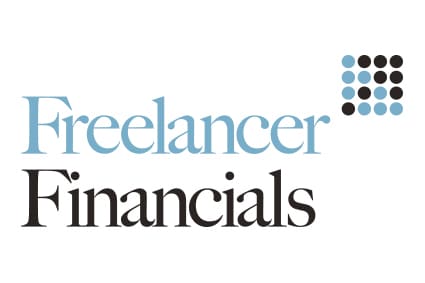Will dividends still be tax efficient from 6th April 2016?

There are, no doubt, many contractors that reap the rewards of their labour by extracting profits from their companies in the most tax efficient manner, ie low salary: high dividends. This has been long standing, straightforward and acceptable tax planning for many years and makes perfect sense. The 2015 summer Budget however announced significant changes in the way dividends are to be taxed from 6th April 2016.
Background
For this tax year and previous tax years, someone receiving a dividend is treated as if they had received a payment from which 10% tax had been deducted. In reality, this tax is never physically deducted from the dividend and paid over to HMRC but rather it is pretended that tax has been deducted. This is called the notional tax credit. A cash dividend of £1,800 therefore is treated for tax purposes as a payment of £2,000 from which tax of £200 has been deducted.
From 6th April of this year though the notional tax credit is abolished, so the dividend a person receives is the amount that will be taxed. In addition the following rates of tax will apply to dividend income:
| Tax band | Rate of tax from 06.04.16 | Previous effective rate* |
|---|---|---|
| Basic rate | 7.5% | 0% |
| Higher rate | 32.5% | 25% |
| Additional rate | 38.1% | 30.56% |
* Effective tax rate is the rate that is applied to a net dividend.
Whilst a new dividend allowance will exempt the first £5,000 of dividends from tax in 2016/17, it will nevertheless form part of a person’s basic rate tax band. So whilst a person receiving £5,000 of dividends will not pay any tax on this income they will have £5,000 less of their basic rate available to use against other income.
Salaries and bonuses
Dividends have always been attractive due to not attracting NIC and being tax free where a person is a basic rate taxpayer. However, for corporation tax purposes they are not tax deductible and are paid out of post-tax profits. Salaries and bonuses on the other hand are tax-deductible and therefore save 20% corporation tax. This tax saving however does not fully offset the costs of NIC that salaries and bonuses attract where they are in excess of £155 p.w (£8,060 p.a), the point at which employee’s NIC becomes payable at a starting rate of 12%. Employers NIC is payable at a rate of 13.8% on earnings in excess of £156 p.w (£8,112 p.a).
Illustration
A company pays a bonus of £20,000 (including employers NIC). It’s corporation tax position will be as follows:
| £ | |
|---|---|
| Gross bonus (inc. employers’ NIC) | 20,000 |
| Less: corporation tax relief (20%) | (4,000) |
| Net cost to company | 16,000 |
The company can therefore pay an all-inclusive bonus of £20,000 or a dividend of £16,000 and be in the same net position. The overall tax efficiency of remuneration is determined by comparing how much money the shareholder/director ends up with in their hand.
Example 1: Income within basic rate band
Adrian is sole director/shareholder of his IT company. He draws a basic salary equivalent to his personal tax allowance and has already used up his £5,000 dividend allowance. His company has surplus income of £16,000 to pay out, which will have to cover tax and/or NIC as well as the bonus or dividend. Either way he wants his company to be in the same net position.
| 2015/16 £ |
2016/17 £ |
|
|---|---|---|
| Option 1: Bonus | ||
| Gross bonus (inc. employers’ NIC) Less: Employers’ NIC @13.8% |
20,000 (2,425) |
20,000 (2,425) |
| Gross bonus to employee Less: Basic rate tax (20%) Employee’s NIC (12%) |
17,575
(3,515) |
17,575
(3,515) |
| Net income | 11,951 | 11,951 |
| Option 2: Dividend | ||
| Dividend (leaving company in same position) Less: Effective tax rate: 0%/7.5% |
16,000 (Nil) |
16,000 (1,200) |
| Net dividend | 16,000 | 14,800 |
| Saving by taking a dividend | 4,049 | 2,849 |
Although Adrian will pay £2,250 more tax to HMRC in 2016/17 on his dividend income, the total cost of employers’ and employee’s NIC makes the bonus route far less tax efficient.
Example 2: Higher rate taxpayer
Melissa runs her own management consultancy firm. She has used up all her basic rate band and already taken dividends that utilise the tax-free dividend allowance from 2016/17. Like Adrian, she is pondering whether to extract surplus company funds of £16,000 as a bonus or dividend. The calculation is similar to Adrian’s but employee’s NIC will fall to 2% above the upper earnings limit of £42,385 (2015/16) and £43,000 (2016/17).
| 2015/16 £ |
2016/17 £ |
|
|---|---|---|
| Option 1: Bonus | ||
| Gross bonus to employee (as per Adrian above) Less: Higher rate tax (40%) Employee’s NIC (2%) |
17,575
(7,030) |
17,575
(7,030) |
| Net income | 10,193 | 10,193 |
| Option 2: Dividend | ||
| Dividend Less: Effective rate of tax; 25%/32.5% |
16,000 (4,000) |
16,000 (5,200) |
| Net dividend | 12,000 | 10,800 |
| Saving by taking a dividend | 1,807 | 607 |
It is clear that Melissa is better off taking a dividend in 2015/16 and also in 2016/17 but the new dividend tax regime reduces the net benefit in 2016/17.
Example 3: Additional rate taxpayer
Marcus has already drawn salary and dividends from his engineering company well in excess of £150,000. The comparison of a £20,000 bonus or £16,000 dividend is as follows:
| 2015/16 £ |
2016/17 £ |
|
|---|---|---|
| Option 1: Bonus | ||
| Gross bonus (as per Adrian above) Less: Additional rate (45%) Employee’s NIC (2%) |
17,575
(7,909) |
17,575
(7,909) |
| Net income | 9,314 | 9,314 |
| Option 2: Dividend | ||
| Dividend Less: Effective rate of tax; 30.56%/38.1% |
16,000 (4,890) |
16,000 (6,096) |
| Net dividend | 11,110 | 9,904 |
| Saving by taking a dividend | 1,796 | 590 |
Like Melissa, it will be beneficial for Marcus to take dividends but the new dividend tax regime significantly limits the net benefit of dividends from 6th April 2016 onwards.
For those that wish to continue with a policy of low salary: high dividends there will continue to be savings to be made albeit not as great as in previous tax years.
Example 4: Basic rate taxpayer – low salary:high dividends
| 2015/16 £ |
2016/17 £ |
|
|---|---|---|
| Option: Salary up to NIC primary threshold | ||
| Salary Dividends Less: |
8,060 34,325 42,385 (Nil) |
8,060 34,940 43,000 (2,025) |
| Net income | 42,385 | 40,975 |
By taking a salary up to the primary threshold (point at which employee’s NIC is triggered) not only is a corporation tax saving of £1,612 achieved but also no NIC or tax is payable as this is covered by the personal allowance. The remainder remuneration, taken in dividends, fully utilises the balance of personal allowance and the full basic rate band.
Rates & Allowances
| 2015/16 (£) | 2016/17 (£) | |
|---|---|---|
| Personal allowance | 10,600 | 11,000 |
| Tax band 20% Tax band 40% Tax band 45% |
0 – 31,785 31,786 – 150,000 Over 150,000 |
0 – 32,000 32,001 – 150,000 Over 150,000 |
Planning tips
Accelerating dividends
From 6th April 2016, where dividends are not sheltered by the dividend allowance of £5,000 or the personal allowance of £11,000, it is no longer possible to pay dividends up to the level at which higher rate tax becomes payable without incurring a tax charge.
For those that still have some of their basic rate band intact for this year, then bringing forward dividend payments before 5th April 2016 should be considered, provided the company has sufficient funds to do so.
Spouses and civil partners
Consider gifting shares to a spouse/civil partner to utilise their dividend allowance and also to shelter substantial dividend payments from the higher rate tax charge. As long as the couple are living together there are no capital gains tax consequences and, provided the shares are ordinary shares with equal rights, there are no Settlements Legislation implications.
Other factors
When considering a remuneration strategy the following factors should also be considered, where appropriate:
- The director/shareholder prefers salary as relevant earnings in order to make pension contributions, although in a lot of cases the PSC will be funding the pension scheme.
- The high income child benefit charge is triggered where ‘adjusted net income’ exceeds £50,000.
- Student loans – unearned income (e.g dividends) in excess of £2,000 p.a counts as income when calculating student loan repayments.
- Personal allowance starts to be withdrawn where adjusted net income exceeds £100,000.





So, just to be clear, in the scenario where salary falls below the higher rate tax threshold but the dividend income on top of salary takes total income £1 over the 40% tax threshold, all dividends (after the £5k allowance) will be taxed at 40%???
Really helpful and timely article – many thanks! It does feel like the Treasury is gunning for SMEs at the moment – and not in a good way. Two points: 1) More than 90% of UK companies are SMEs, so Treasury are gunning for the majority therefore – how they think this will boost the UK economy is beyond me. Killing off entrepreneurialism is the more likely impact. And 2) Treasury may hate personal service companies – but most of our (bigger) clients will only trade with us if we have PSC/limited companies. They don’t like doing business with sole traders. So how does Treasury think that we are going to make a living if the thrust of their taxation policy is to decimate any profits? Some young SPAD in Treasury got this seriously wrong or didn’t do their homework. Or maybe they thought that we were the least powerful lobby group that they could aim their hatchets at. Sigh….
Good article. A calulator would be useful. Is it possible to make children (over 18) share holders and utilise their £5,000 tax free allowance? Can they be studying away from home? Many thanks. Matthew.
http://www.gize.co.uk
if the government is so keen on destroying contractors then why do contractors work for the government. just stop giving the government the skills base. Only then we may see a change in attitude.
Marty – only that slice of dividend income that is exposed to the higher rate will be taxed at 32.5%. Example:
Person has a non-dividend income of £40,000, and receive dividends of £9,000.
Of the £40,000 non-dividend income, £11,000 is covered by the Personal Allowance, leaving £29,000 to be taxed at basic rate.
This leaves £3,000 of income that can be earned within the basic rate limit before the higher rate threshold is crossed. The Dividend Allowance covers this £3,000 first, leaving £2,000 of Allowance to use in the higher rate band. All of this £5,000 dividend income is therefore covered by the Allowance and is not subject to tax.
The remaining £4,000 of dividends are all taxed at higher rate (32.5%).
Matthew – if the adult children hold ordinary shares in their own right & the dividend income remains their own, ie the parents must have no right over the income, then this is a possibility. However, I would urge caution.
It should be remembered that the House of Lords in the Arctic Systems case found that the gift of an ordinary share by Mr Jones to his wife and subsequent declaration of a dividend amounted to a settlement, but this was exempted from the anti-avoidance rule as the share was not ‘wholly or substantially a right to income’. There is no guarantee that HMRC will not attempt to attack arrangements involving a gift of shares to persons other than spouses. Indeed, it is probably most likely.
Example 4 which I looked at – does not take account of Corporation Tax payable by the Ltd co entity employing the shareholder whom has taken a dividend ?
This is so confusing and I call myself an engineer!
What is the best way to determine what the most tax efficient calculation?
Is there a calculator for all of this?
All I want to do is work as a freelance contractor. But all of the gains are eroding away. My only joy is that I can move from project to project.